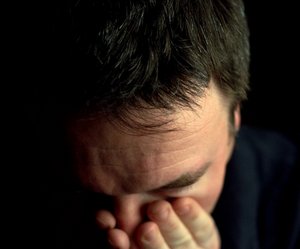This is a series of articles on depression published as a community service. The information in these articles follow our Privacy and Security Guidelines and cannot be construed as medical guidance. For additional information and counseling, consult with your physician or the appropriate health care professional of your choice. You can also find information on TMS here.
|
UPDATED: Everyone occasionally feels blue or sad. There are also those dreaded "winter blues". But these feelings are usually short-lived and pass within a couple of days, usually with no problems or persistent symptoms. Some people may even say that they are "depressed". Although this is true, that person is not clinically depressed. When an individual has clinical depression, there are physical changes that happen within the brain which reflect in attitudes, mood, symptoms, and actions. Clinical depression is a common but serious mental disorder that affects over 20 million people in the United States, many of which will never seek diagnosis or treatment. Patients present with depressed mood, loss of interest or pleasure, decreased energy, feelings of guilt or low self-worth, abnormal patterns of sleep or appetite, gruesome nightmares, and poor concentration. Moreover, depression may often come with symptoms of anxiety and varying complex presentations of bipolar disorder. |
|
| These problems can become chronic or recurrent and lead to substantial impairment in an individual’s ability to take care of his or her everyday responsibilities. At its worst, depression can lead to a patient's attempt on their life. Clinical Depression interferes with daily life and causes pain for both the individual, their families, and loved ones. Patients with depressive disorder often go from one job to another, cannot work, or eventually end in disability, being maintained by their family or loved ones.
Many people afflicted with Major Depressive Disorder (MDD) never seek treatment. This is specially true in males, where the World Health Organization (WHO) estimates that ”fewer than 25% of male sufferers worldwide will seek treatment because of the social stigma associated with mental disorders including depression.” Properly and timely treated, even those with the most severe depression, can get better. Medications, psychotherapy, and electroconvulsive therapy (ECT) are the most common methods to treat depression. As patients move from one medication to the next level medication as well as augmentation medication, the annual cost for medication can be staggering, as well as the common, insidious, and problematic systemic side effects of both the drug therapy and ECT therapy. The main objective of all treatments for MDD is to attain remission, but in many cases just reducing the symptoms of MDD and reducing the amount and types of medication used is enough to bring the patient back to a productive life and enhance the relationship with their families and loved ones. Next article: Symptoms of Depression Transcranial Magnetic Stimulation (TMS) is a revolutionary treatment approved by the FDA in 2008. TMS has been proven safe and effective in the treatment of MDD with minimal or no side-effects. For more information on TMS click here. |
|
| Back to MTD Main Page | Subscribe to MTD |
